Optoma UHZ66 review: super-bright and lightning-fast gaming projector
Optoma targets big-screen gamers with its latest laser-powered 4K HDR beamer
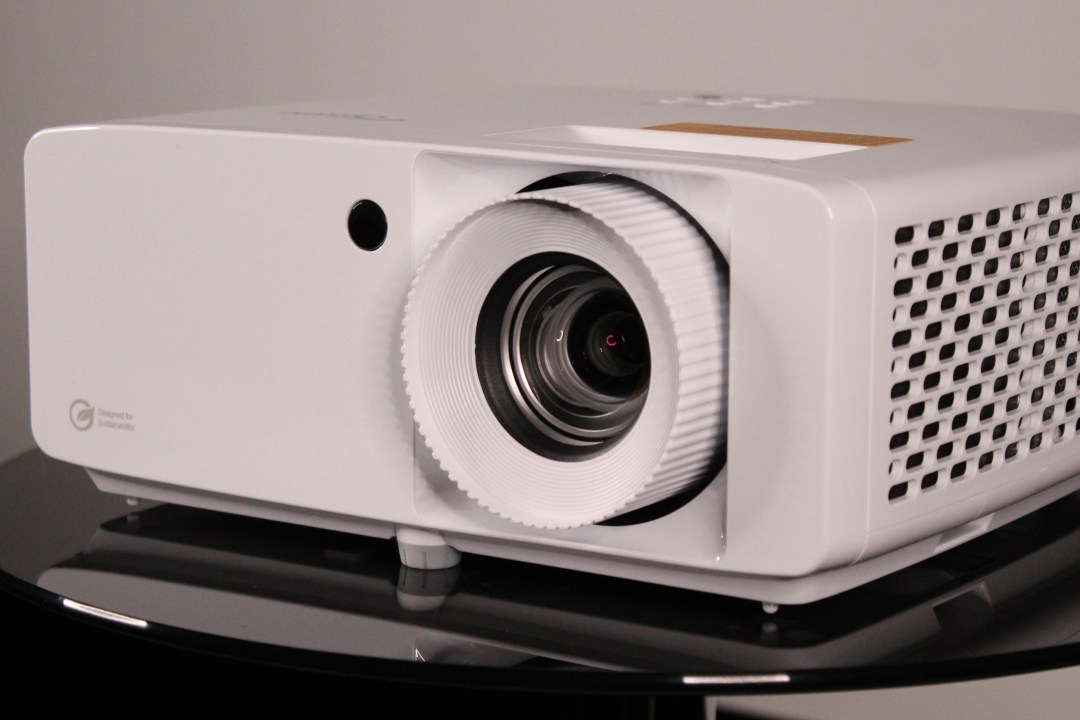
Stuff Verdict
This laser-powered DLP projector delivers sufficient brightness and a low enough latency to satisfy any cost-conscious but demanding big-screen gamer
Pros
- Sharp and detailed image
- Super-bright, long-life laser light source
- Incredibly low latency for a projector
Cons
- Blacks look more like dark grey
- Limited setup options
- No support for 4K/120 gaming
Introduction
The Optoma UHZ66 is the brand’s newest laser-powered 4K HDR projector, with gaming squarely in its sights thanks to very bright and equally big images, plus incredibly fast response times.
This DLP beamer outputs a whopping 4000 lumens, enough to easily light up a 300in screen, while input lags ranging from 17ms to as low as 4ms should satisfy the most demanding of gamers.
How we test projectors
Every projector reviewed on Stuff is used as our main device throughout the testing process. We use benchmarks and tests, as well as our own years of experience, to judge general performance, display, sound and overall quality. Manufacturers have no visibility on reviews before they appear online, and we never accept payment to feature products. Find out more about how we test and rate products.
Design & installation: standard looks, limited setup
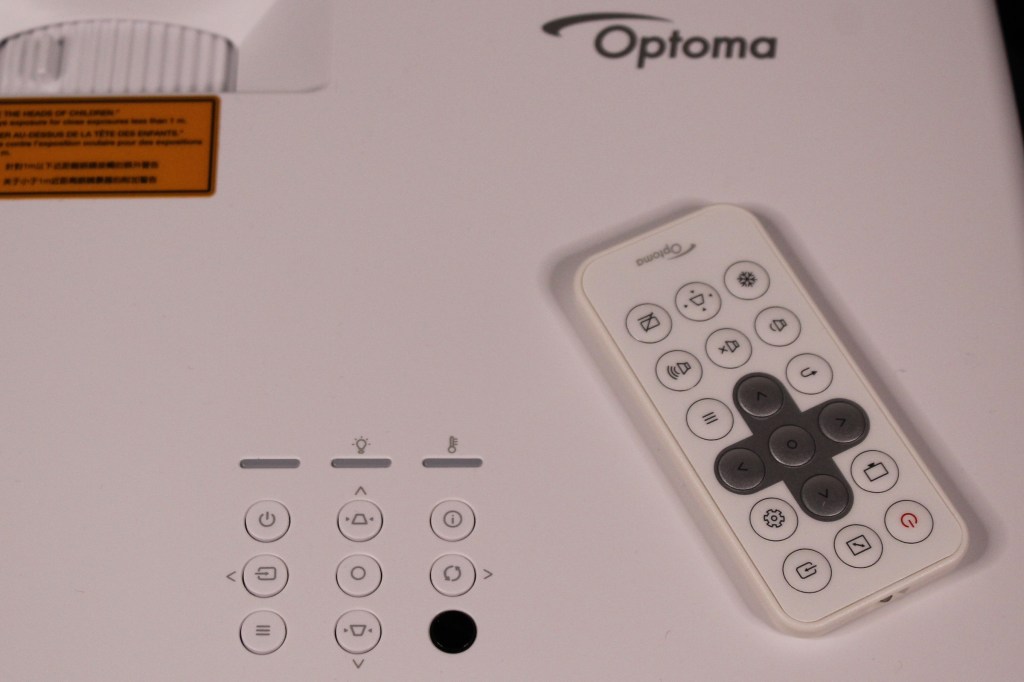
The Optoma UHZ66 doesn’t deviate from the standard DLP projector playbook, with a relatively compact white plastic chassis, a lens offset to the right as you face the beamer, and exhaust vents for cooling on either side. The build quality is reasonable, but also fairly light at just 3kg.
The feather weight construction makes installation easy, with a choice of stand or ceiling mount, but the lens controls are very limited with only zoom and focus. This means you need to physically move the beamer for vertical and horizontal orientation, but there are feet for levelling the image.
There’s also keystone control for correcting geometric errors, but this additional processing does rob the projector of some fine detail. The 1.6x zoom can create a 100in image from a distance of around 2m, and for larger rooms you can even beam a pin-sharp image of up to 300in in size.
One of the advantages of a single-chip DLP projector is a super-sharp image, but unfortunately one of the disadvantages is ‘rainbow’ artefacts caused by the built-in colour wheel. This won’t affect everyone, but if you suffer from this type of colour-fringing the UHZ66 isn’t the best choice.
Another side effect of the colour wheel is a high-pitched noise as it wizzes around, although due to the 4000 lumens of light output the fans are also fairly loud while keeping everything cool. On the plus side, all this brightness means you can use it in a room with white walls or ambient light.
There are some basic controls on top, along with a credit card-sized remote that will almost certainly get lost up down the back of the sofa. This zapper uses icons to identify each blister-type button, and there’s also no backlight, which makes it tricky to operate the UHZ66 in the dark.
At the rear you’ll find two HDMI 2.0 inputs (one of which supports eARC), RS-232/LAN connectors for serial control, a 3.5mm audio output, and a USB port for power. The lack of HDMI 2.1 inputs means the projector is limited to 4K/60Hz, but it can support 1080p Full HD gaming at up 240Hz.
Features: basic but effective
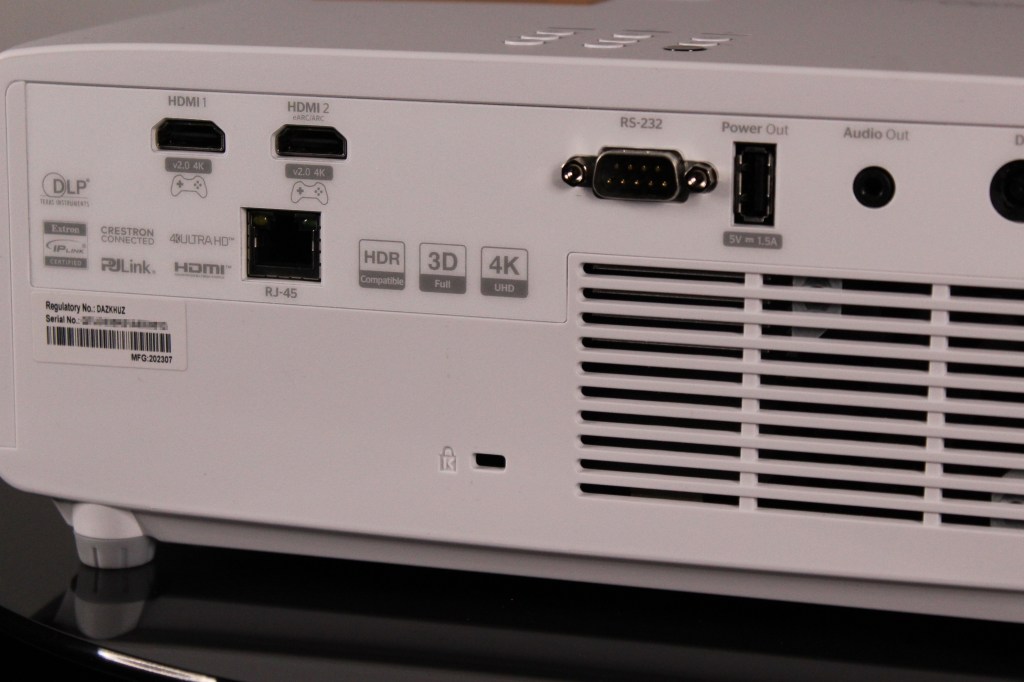
The Optoma UHZ66 supports resolutions up to Ultra HD (3840 x 2160), although the DLP chip isn’t actually native 4K but 1080p. However, thanks to a 240Hz refresh rate the image can be flashed four times to build up a 4K/60Hz image that’s largely indistinguishable from native 4K.
The laser light source not only delivers eye-scorching brightness of 4000 lumens, but a lifespan of 30,000 hours. So you can use this projector to watch movies and sport or game for years without worrying about replacing it. The image is also more consistent and doesn’t dim over that long life.
The UHZ66 supports high dynamic range in the form of HDR10 and HLG (hybrid log-gamma), and Optoma includes effective tone mapping to produce HDR pictures where the shadows are free of crush, brighter highlights don’t lose detail due to clipping, and colours retain depth and nuance.
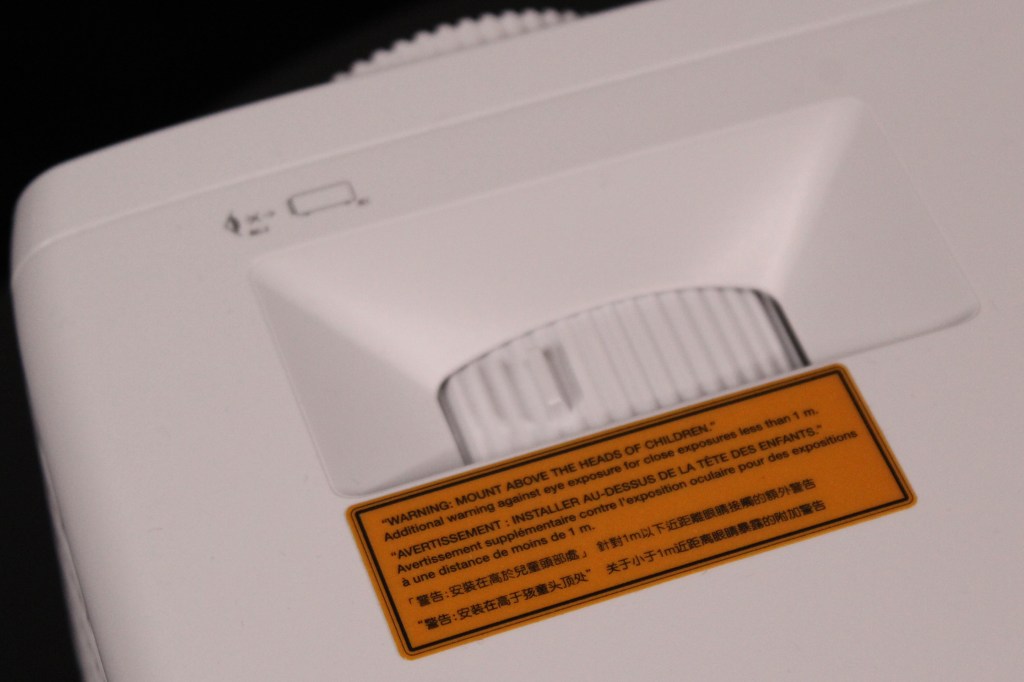
While 3D doesn’t enjoy the popularity it did a decade ago, if you have a large collection of 3D Blu-rays you’ll be glad to discover the UHZ66 fully supports the third dimension. You’ll need to buy third party active shutter glasses, but the brightness and fast response times promise superb 3D.
As is often the case with projectors in this segment of the market, the UHZ66 has an integrated speaker with 15W of amplification. While it’s hardly sufficient for the latest blockbuster movie or immersive gaming, it is handy if you quickly need audio without using a separate sound system.
In terms of missing features, the lack of HDMI 2.1 inputs precludes support for HDR10+ and the benefits of its dynamic metadata, while the manual lens controls don’t allow for lens memories, so if you’re using a wider aspect ratio screen you should definitely look elsewhere for your projector.
Performance: stellar brightness

The Optoma UHZ66 doesn’t disappoint with bright and punchy big-screen pictures that enjoy exceptional sharpness thanks to the single-chip DLP design and support for 4K imaging. The upscaling and picture processing are also very good thanks to Optoma’s projector knowhow.
The laser light source is incredibly bright, and regardless of the size of your screen or the amount of ambient light in the room, this beamer should have no problems dazzling the senses. There’s certainly sufficient luminance to produce SDR and especially HDR images that pop with vitality.
There are a number of picture modes with Reference the best choice for darker rooms, although if there’s some ambient light the Bright setting comes in handy. Both these modes retain a pleasing level of image accuracy, ensuring you’re seeing what the content creator’s originally intended.
Thanks to the UHZ66’s inherent brightness HDR is excellent, with the tone mapping getting the best out of this type of content by retaining detail in both the shadows and specular highlights. The colour reproduction is also good, although limited to Rec.709 so you don’t get the full gamut.

If there’s one area where DLP beamers are particularly good it’s motion handling, and the Optoma is no exception. There’s a pleasing smoothness to movement, with movies retaining a film-like quality while also appearing free of judder or other artefacts that affect less capable display tech.
DLP projectors struggle when it comes to blacks, and the UHZ66 suffers here with blacks that appear more like dark grey and thus rob the contrast of some of its impact. Having said that, this is less of an issue with white walls where any reflected light will wash out the contrast anyway.
A state-of-the-art 4K disc like Oppenheimer reveals exceptionally detailed images, while the New Mexico landscapes benefit from all that extra brightness. The colours lack a degree of depth, but the Trinity test retains its ability to stun, especially when the atomic flash lights up the night sky.
Where the UHZ66 tends to struggle is with darker films like Dune, where the interiors are often bathed in shadows to provide protection from the burning heat. Conversely the bleached desert vistas are rendered with blinding luminance, while still managing to retain detail in the highlights.
Gaming: Lightning-fast responses
The Optoma UHZ66 is a winner when it comes to gaming with superb motion that results in very smooth movement with 4K at 60Hz, and even slicker game play if you have a PC rig capable of 1080p Full HD at 240Hz. This kind of high frame rate support is essential for next-gen gamers, although as already mentioned the lack of HDMI 2.1 inputs precludes gaming at 4K/120Hz.
These impressive frame rates are backed up by incredibly low latency measurements, with blink-and-you’ll-miss-it lag times as low as 17ms for 4K/60Hz and a ridiculously low 4.4ms for 1080p/240Hz. These numbers should delight the most demanding of gamers, with the promise of buttery smooth motion and lightning fast response times on projection screens up to an immersive 300in.
The result is a hugely enjoyable gaming experience whether you’re using a next-gen console or the latest souped-up gaming PC. Select the Game preset and you’ll immediately be rewarded with images that are sharp, detailed, and colourful, while the very capable tone-mapping ensures accurate HDR for gaming that fills your field of view with vibrant pictures that are sure to please.
Optima UHZ66 verdict
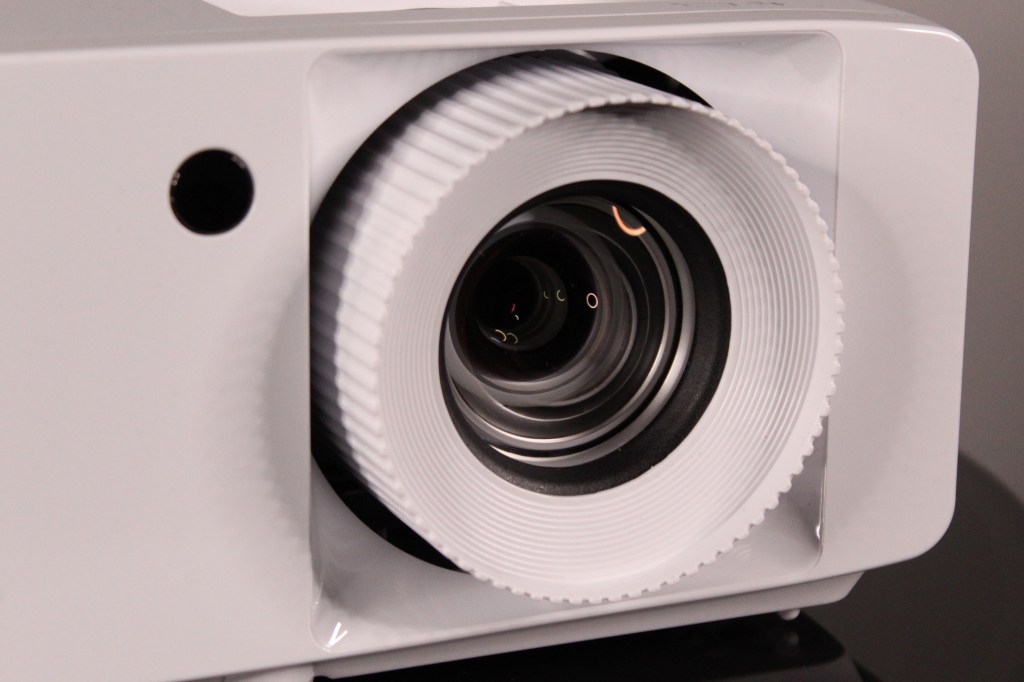
The Optoma UHZ66 certainly lives up to its billing, with seriously bright images and lightning fast response times, all of which makes it ideal for big screen gaming. Film fans will also appreciate the punchy 4K HDR visuals, although the black levels leave a lot to be desired, and while setup is simple it’s also fairly limited.
At this price point you really can’t expect support for features such as 4K/120Hz gaming, but otherwise this is a solid and affordable if somewhat basic DLP projector.
Stuff Says…
This laser-powered DLP projector delivers sufficient brightness and a low enough latency to satisfy any cost-conscious but demanding big-screen gamer
Pros
Sharp and detailed image
Super-bright, long-life laser light source
Incredibly low latency for a projector
Cons
Blacks look more like dark grey
Limited setup options
No support for 4K/120 gaming
Optoma UHZ66 technical specifications
| Display type | Single-chip DLP |
| Display resolution | 3840 x 2160 pixels |
| Light source | Laser with a claimed 30,000 hours lifespan |
| Brightness (claimed) | 4000 lumens |
| Inputs | 2 x HDMI 2.0 |
| HDR | HDR10; HLG |
| Dimensions (WxHxD) | 274 x 114 x 216mm |
| Weight | 3kg |
